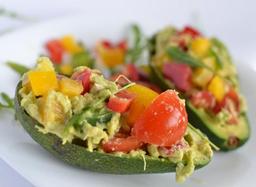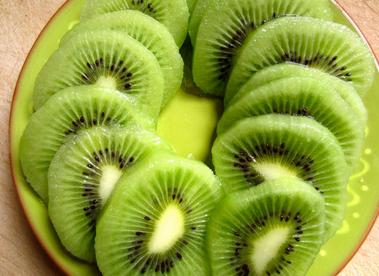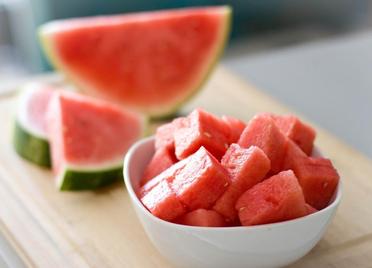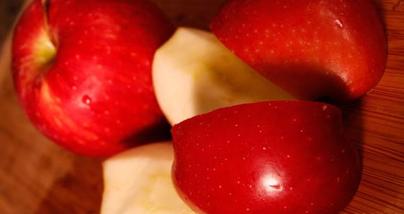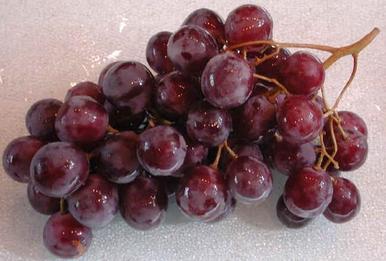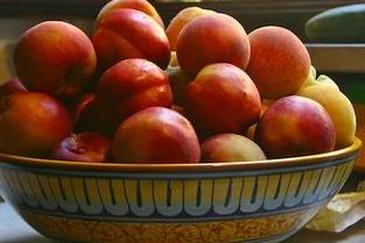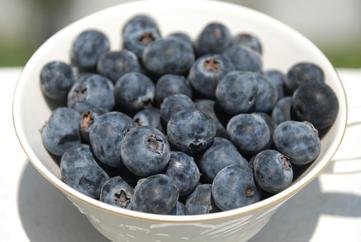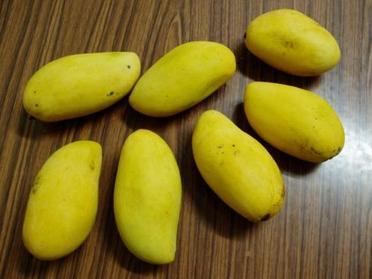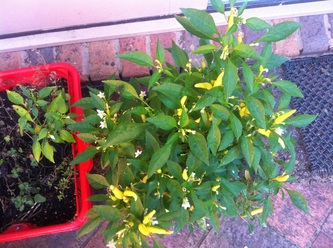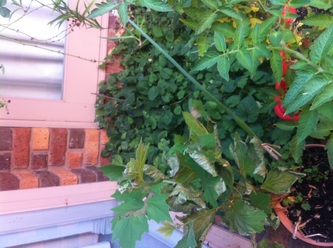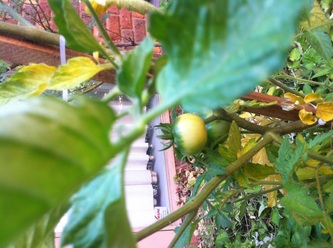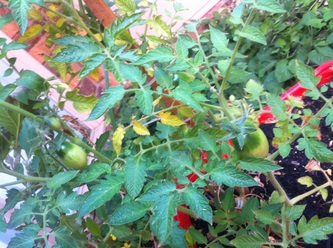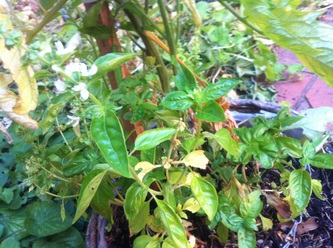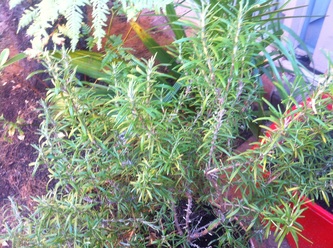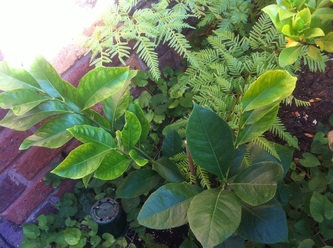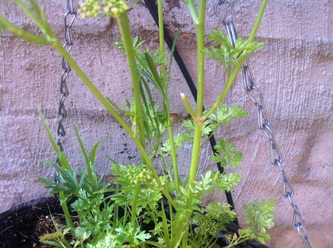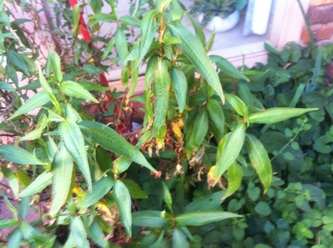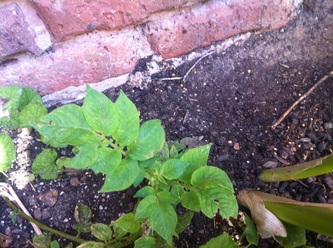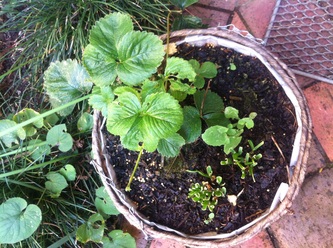FOOD AND HEALTH
11/01/13 article prepared by Natasha M
The Mono Eating Discover the Simplicity of Eating
Have you heard of the mono eating? I thought we will talk about it today. My cousin who lives in Moscow, Russia went on mono eating a couple of years ago and he never regrets it. The benefits to his health and just general well being and feeling good are so incredible he would not go back to his eating habits for anything in the world. He mentioned that his every morning is like meeting a day with a great joy and smile.
Let's see what the experts say :
When did you last indulge in your favorite piece of fruit and really devoted time to enjoy every bite?
Have you ever tried to eat as many bananas, mangoes, melons or berries as you feel like in one go? And we are merely talking about binge-eating here.
The point is that trying to live on a mono diet a couple of times a week or even every day if you desire to do so, is a great, almost liberating experience from a nutritional standpoint. It can add an interesting spice to your eating habits when you'd normally combine a variety of foods to prepare a raw or cooked dish.
Typically, eating as much of one of your favorite foods in one meal is defined as a mono diet. It is a different experience to combining various foods in one meal.
Let's point out the benefits of a mono meal and the difference to traditionally prepared meals:
The Mono Eating Discover the Simplicity of Eating
Have you heard of the mono eating? I thought we will talk about it today. My cousin who lives in Moscow, Russia went on mono eating a couple of years ago and he never regrets it. The benefits to his health and just general well being and feeling good are so incredible he would not go back to his eating habits for anything in the world. He mentioned that his every morning is like meeting a day with a great joy and smile.
Let's see what the experts say :
When did you last indulge in your favorite piece of fruit and really devoted time to enjoy every bite?
Have you ever tried to eat as many bananas, mangoes, melons or berries as you feel like in one go? And we are merely talking about binge-eating here.
The point is that trying to live on a mono diet a couple of times a week or even every day if you desire to do so, is a great, almost liberating experience from a nutritional standpoint. It can add an interesting spice to your eating habits when you'd normally combine a variety of foods to prepare a raw or cooked dish.
Typically, eating as much of one of your favorite foods in one meal is defined as a mono diet. It is a different experience to combining various foods in one meal.
Let's point out the benefits of a mono meal and the difference to traditionally prepared meals:
- Easy on your digestion especially if it's the first meal of the day
- Cleansing effects on the intestinal tract
- The fruit you choose for a mono meal are eaten raw and are easier digested than combining three or four different fruits to make a fruit salad
- A mono meal is very nutritious
- A mono meal is a great way to indulge in your favorite fruit on a regular basis and enjoying the moment of eating
- You can't over-eat on a mono meal because your taste will change to slightly sour once you feel satisfied
- Eating a mono meal is a time saver in the morning; fruit is peeled and cut into small pieces within two minutes
- You can re-discover the real taste of a certain food and be able to distinguish between organic and non-organic fruits
- You learn to listen to your body even more; depending on the time of the day and what type of training you've done, your taste for a certain fruit reflects what the body needs at that moment
Some people do live on a mono diet for a while to detox and cleanse their system. This may only make sense for ultrarunners during the off-season or if you take a whole month off from sport. But I honestly wouldn't recommend living on a mono diet for too long. The sport requires that the body is provided with sufficient amounts of nutrients such as vitamins, minerals, carbohydrates, protein and fat.
While it is true that mono meals based on a selected fruit provide plenty of carbohydrates, there isn't enough protein and fat in these meals over longer periods of time
A mono meal is about keeping it simple, pure and uncomplicated.
Before I tried my first mono meal I felt a little preoccupied. Would I really enjoy eating five, six or seven bananas in one go?
What effects would a fruit meal have on my digestion? How would my energy levels be after the meal?
And how did I feel? Energetic, happy in myself, lean and to my surprise, light in my body. Even though a meal like this is high in simple sugars, I didn't notice blood sugar crashes and as a result energy lows.
When is the best time for a mono meal?
Whenever you feel like it. It is considered a proper meal and can be enjoyed for breakfast, lunch or dinner. What happens when you eat a fruit mono meal is that you'll feel that your appetite is satisfied much sooner. You can't overeat on a mono meal. Some people can eat 10-15 (yes,15) small-sized bananas in one meal whereas others are happy eating 5-8. The same goes for other fruits such as mangoes, melon, grapes and apples.
Choosing fruit for a mono meal makes sense instead of eating carrots, lettuce or celery. A fruit mono-meal provides sufficient calories. Eating six or more bananas easily adds up to 600 and more calories, i.e. a considerable amount for one meal.
Here are some examples of fruits that best suit a mono meal after your training:
Before I tried my first mono meal I felt a little preoccupied. Would I really enjoy eating five, six or seven bananas in one go?
What effects would a fruit meal have on my digestion? How would my energy levels be after the meal?
And how did I feel? Energetic, happy in myself, lean and to my surprise, light in my body. Even though a meal like this is high in simple sugars, I didn't notice blood sugar crashes and as a result energy lows.
When is the best time for a mono meal?
Whenever you feel like it. It is considered a proper meal and can be enjoyed for breakfast, lunch or dinner. What happens when you eat a fruit mono meal is that you'll feel that your appetite is satisfied much sooner. You can't overeat on a mono meal. Some people can eat 10-15 (yes,15) small-sized bananas in one meal whereas others are happy eating 5-8. The same goes for other fruits such as mangoes, melon, grapes and apples.
Choosing fruit for a mono meal makes sense instead of eating carrots, lettuce or celery. A fruit mono-meal provides sufficient calories. Eating six or more bananas easily adds up to 600 and more calories, i.e. a considerable amount for one meal.
Here are some examples of fruits that best suit a mono meal after your training:
Cut 1-2 cantaloupe melons into cubes and indulge. Cantaloupes are known for their re-hydrating effects on the body. During the summer I often had a melon mono meal straight after a long run. A post-workout snack ideally contains 200-250 calories, plenty of carbs and only a small amount of protein and fat.
From 1 1/2 cantaloupe melons you get 53 g of carbohydrates, 5 g of protein, next to no fat and high amounts of sodium, potassium and calcium.
Watermelons, honeydew melon and cantaloupe can be eaten together in a mono meal. If you're sensitive only eat one kind of melon. Bananas naturally contain more calories than melons. If you opt for a banana mono meal, consume up to three after training and have a second meal consisting of (un)cooked foods and a little more fat and protein within 90 minutes of finishing your run. Mangoes are also on the list of favorites for a mono meal after training. 1 1/2 mangoes cut into pieces contain 260 calories, 68 g of carbs and 2 g of protein. Or substitute a warm cooked lunch for a mango feast and enjoy as many as you wish.
The mono diet can also include foods high in starches. Potatoes, bread and grains can be served as a mono meal. For the purpose of getting more vitamins into your body the focus lies primarily on fresh fruit rather than processed foods.
From 1 1/2 cantaloupe melons you get 53 g of carbohydrates, 5 g of protein, next to no fat and high amounts of sodium, potassium and calcium.
Watermelons, honeydew melon and cantaloupe can be eaten together in a mono meal. If you're sensitive only eat one kind of melon. Bananas naturally contain more calories than melons. If you opt for a banana mono meal, consume up to three after training and have a second meal consisting of (un)cooked foods and a little more fat and protein within 90 minutes of finishing your run. Mangoes are also on the list of favorites for a mono meal after training. 1 1/2 mangoes cut into pieces contain 260 calories, 68 g of carbs and 2 g of protein. Or substitute a warm cooked lunch for a mango feast and enjoy as many as you wish.
The mono diet can also include foods high in starches. Potatoes, bread and grains can be served as a mono meal. For the purpose of getting more vitamins into your body the focus lies primarily on fresh fruit rather than processed foods.
Horizontal DNA and Chemtrails
Horizontal DNA and Chemtrailsby Stuart Wilde - December 9, 2012 - Alternative Thinking, Health / Diet
Barbara H. Peterson
Farm Wars
This is not a sci-fi fantasy, it is real. Our personal DNA and the DNA of just about every living organism on the planet is being changed in ways that we cannot even imagine through the process of horizontal or lateral gene transfer, courtesy of the biotechnology industry and geo-engineering programs.
Horizontal gene transfer is the transfer of genetic material from one organism to another organism that is not its offspring; this is most common among bacteria.
http://www.biologyreference.com/knowledge/Population_genetics.html
Horizontal gene transfer is used in laboratory-based genetic engineering, and also occurs naturally, within the confines of nature. When nature is in charge, certain things simply do not happen such as a tomato crossing with a fish. In the laboratory, using artificial horizontal gene transfer, anything goes.
Genetic engineering involves designing artificial constructs to cross species barriers and to invade genomes. In other words, it enhances horizontal gene transfer – the direct transfer of genetic material to unrelated species. The artificial constructs or transgenic DNA typically contain genetic material from bacteria, viruses and other genetic parasites that cause diseases as well as antibiotic resistance genes that make infectious diseases untreatable.
http://online.sfsu.edu/rone/GEessays/horizgenetransfer.html
The results of these experiments are inherently unstable, and are being unleashed with no oversight into our food supply, and onto the world’s agricultural stage.
Read More…. http://farmwars.info/?p=9583
Horizontal DNA and Chemtrailsby Stuart Wilde - December 9, 2012 - Alternative Thinking, Health / Diet
Barbara H. Peterson
Farm Wars
This is not a sci-fi fantasy, it is real. Our personal DNA and the DNA of just about every living organism on the planet is being changed in ways that we cannot even imagine through the process of horizontal or lateral gene transfer, courtesy of the biotechnology industry and geo-engineering programs.
Horizontal gene transfer is the transfer of genetic material from one organism to another organism that is not its offspring; this is most common among bacteria.
http://www.biologyreference.com/knowledge/Population_genetics.html
Horizontal gene transfer is used in laboratory-based genetic engineering, and also occurs naturally, within the confines of nature. When nature is in charge, certain things simply do not happen such as a tomato crossing with a fish. In the laboratory, using artificial horizontal gene transfer, anything goes.
Genetic engineering involves designing artificial constructs to cross species barriers and to invade genomes. In other words, it enhances horizontal gene transfer – the direct transfer of genetic material to unrelated species. The artificial constructs or transgenic DNA typically contain genetic material from bacteria, viruses and other genetic parasites that cause diseases as well as antibiotic resistance genes that make infectious diseases untreatable.
http://online.sfsu.edu/rone/GEessays/horizgenetransfer.html
The results of these experiments are inherently unstable, and are being unleashed with no oversight into our food supply, and onto the world’s agricultural stage.
Read More…. http://farmwars.info/?p=9583
Lettuce is Dangerous
by Stuart Wilde - December 1, 2004 - Health / Diet
I said in my book “God’s Gladiators” that lettuce is poisonous, it destroys your immune system and makes you allergic to almost everything. Here’s an article below that might explain why it’s so toxic.
Lettuce is deadly. Let-us-pray for something decent to eat!
© Stuart Wilde 2004 – www.stuartwilde.com
Rocket Fuel in Milk, Lettuce
By Amit Asaravala
A large portion of the United States’ milk and lettuce supply may be contaminated with potentially unsafe levels of a toxic chemical used in rocket fuel, according to data released by the Food and Drug Administration on Monday.
The data, part of a preliminary survey of milk and lettuce in 15 states, revealed perchlorate contamination in nearly 94 percent of reviewed samples. The results echo earlier findings by the Environmental Working Group, a nonprofit watchdog that issued a warning about perchlorate contamination in California-produced milk in June.
“The study confirms what we and some other people have been saying for a while — that perchlorate is not only a problem in areas with known water contamination but for anyone who eats food grown in the U.S.,” said Bill Walker, vice president of the Environmental Working Group’s West Coast operations.
Perchlorate is both a naturally occurring and man-made chemical. It is used by the aerospace and defense industries to help rocket fuel burn. In humans, high concentrations can disrupt the thyroid gland, which regulates metabolism and is linked to the development of motor skills in children. Because the long-term effects of small concentrations of perchlorate on humans are still unknown, both the FDA and the Environmental Working Group cautioned consumers not to draw the conclusion that they should stop drinking milk or eating lettuce.
by Stuart Wilde - December 1, 2004 - Health / Diet
I said in my book “God’s Gladiators” that lettuce is poisonous, it destroys your immune system and makes you allergic to almost everything. Here’s an article below that might explain why it’s so toxic.
Lettuce is deadly. Let-us-pray for something decent to eat!
© Stuart Wilde 2004 – www.stuartwilde.com
Rocket Fuel in Milk, Lettuce
By Amit Asaravala
A large portion of the United States’ milk and lettuce supply may be contaminated with potentially unsafe levels of a toxic chemical used in rocket fuel, according to data released by the Food and Drug Administration on Monday.
The data, part of a preliminary survey of milk and lettuce in 15 states, revealed perchlorate contamination in nearly 94 percent of reviewed samples. The results echo earlier findings by the Environmental Working Group, a nonprofit watchdog that issued a warning about perchlorate contamination in California-produced milk in June.
“The study confirms what we and some other people have been saying for a while — that perchlorate is not only a problem in areas with known water contamination but for anyone who eats food grown in the U.S.,” said Bill Walker, vice president of the Environmental Working Group’s West Coast operations.
Perchlorate is both a naturally occurring and man-made chemical. It is used by the aerospace and defense industries to help rocket fuel burn. In humans, high concentrations can disrupt the thyroid gland, which regulates metabolism and is linked to the development of motor skills in children. Because the long-term effects of small concentrations of perchlorate on humans are still unknown, both the FDA and the Environmental Working Group cautioned consumers not to draw the conclusion that they should stop drinking milk or eating lettuce.
“At this point we don’t know if there is any risk,” said an FDA spokeswoman. “Therefore, we’re telling consumers to continue to eat a wellbalanced diet. We don’t want people to alter their diet in ways that make them think they’re removing perchlorate, when they’re really removing the healthy benefits of those foods.” In its survey, the FDA found an average concentration of 5.76 parts per billion of perchlorate in the 104 milk samples it studied. In 128 samples of green leaf, red leaf, iceberg and romaine lettuce, the agency found an average concentration of 10.49 parts per billion.
Federal and state agencies are still debating just how much perchlorate is acceptable in human diets. California health officials recommend that drinking water not exceed more than 6 parts per billion of perchlorate. The U.S. Environmental Protection Agency, meanwhile, recommends a stricter 1 part per billion.
“It’s subtle,” said Walker. “It’s not like you’re fine today if you get 6 parts per billion (of perchlorate in milk) and then tomorrow you drink a glass with 7 parts per billion and suddenly you’re sick.”
He added, however, that people with existing thyroid problems and pregnant women should monitor the total amount of perchlorate they ingest each day.
“We found that there are some people out there — like the 1.6 million people of child-bearing age — who are eating a diet very heavy in lettuce,” he said. “This could be exceeding the EPA’s recommended safe dose.”
Though the FDA study didn’t explore how perchlorate gets into lettuce or milk, scientists believe it enters the water stream through industrial leaks. It is then thought to be taken up by, and concentrated in, plants and animals.
The National Academy of Sciences is currently reviewing the EPA’s assessment of the risks of perchlorate. A report is expected soon. The FDA said it would wait until then to decide whether or not to enforce limits
on the amount of the chemical that can appear in food products.
Federal and state agencies are still debating just how much perchlorate is acceptable in human diets. California health officials recommend that drinking water not exceed more than 6 parts per billion of perchlorate. The U.S. Environmental Protection Agency, meanwhile, recommends a stricter 1 part per billion.
“It’s subtle,” said Walker. “It’s not like you’re fine today if you get 6 parts per billion (of perchlorate in milk) and then tomorrow you drink a glass with 7 parts per billion and suddenly you’re sick.”
He added, however, that people with existing thyroid problems and pregnant women should monitor the total amount of perchlorate they ingest each day.
“We found that there are some people out there — like the 1.6 million people of child-bearing age — who are eating a diet very heavy in lettuce,” he said. “This could be exceeding the EPA’s recommended safe dose.”
Though the FDA study didn’t explore how perchlorate gets into lettuce or milk, scientists believe it enters the water stream through industrial leaks. It is then thought to be taken up by, and concentrated in, plants and animals.
The National Academy of Sciences is currently reviewing the EPA’s assessment of the risks of perchlorate. A report is expected soon. The FDA said it would wait until then to decide whether or not to enforce limits
on the amount of the chemical that can appear in food products.
...and now let's have a look at
What's growing in our gardens...
as summer progresses through January and the hottest days...
Tomatoes (blooming and ripping), grape-vines, hot chili peppers becoming yellow, veitnamese lemon verbena, basil survived the hot days, rosemary, lemon tree that we planted a couple of months ago is catching up, parsley is producing seeds for the next year crop, strawberries, garlic (I cut it off to decorate the birthday table late December), potato sprouts are struggling in the shade and seeding onion shoot… Healthy eating and we will catch up next month.
What's growing in our gardens...
as summer progresses through January and the hottest days...
Tomatoes (blooming and ripping), grape-vines, hot chili peppers becoming yellow, veitnamese lemon verbena, basil survived the hot days, rosemary, lemon tree that we planted a couple of months ago is catching up, parsley is producing seeds for the next year crop, strawberries, garlic (I cut it off to decorate the birthday table late December), potato sprouts are struggling in the shade and seeding onion shoot… Healthy eating and we will catch up next month.
Displaying page: Good Advice Magazine >> Food and Drinks >> Food and Health >> 17
Food and Health other articles: << 19 18 17 16 15 14 13 12 11 10 09 08 07 06 05 04 03 02 01
Food and Health other articles: << 19 18 17 16 15 14 13 12 11 10 09 08 07 06 05 04 03 02 01
|
|
